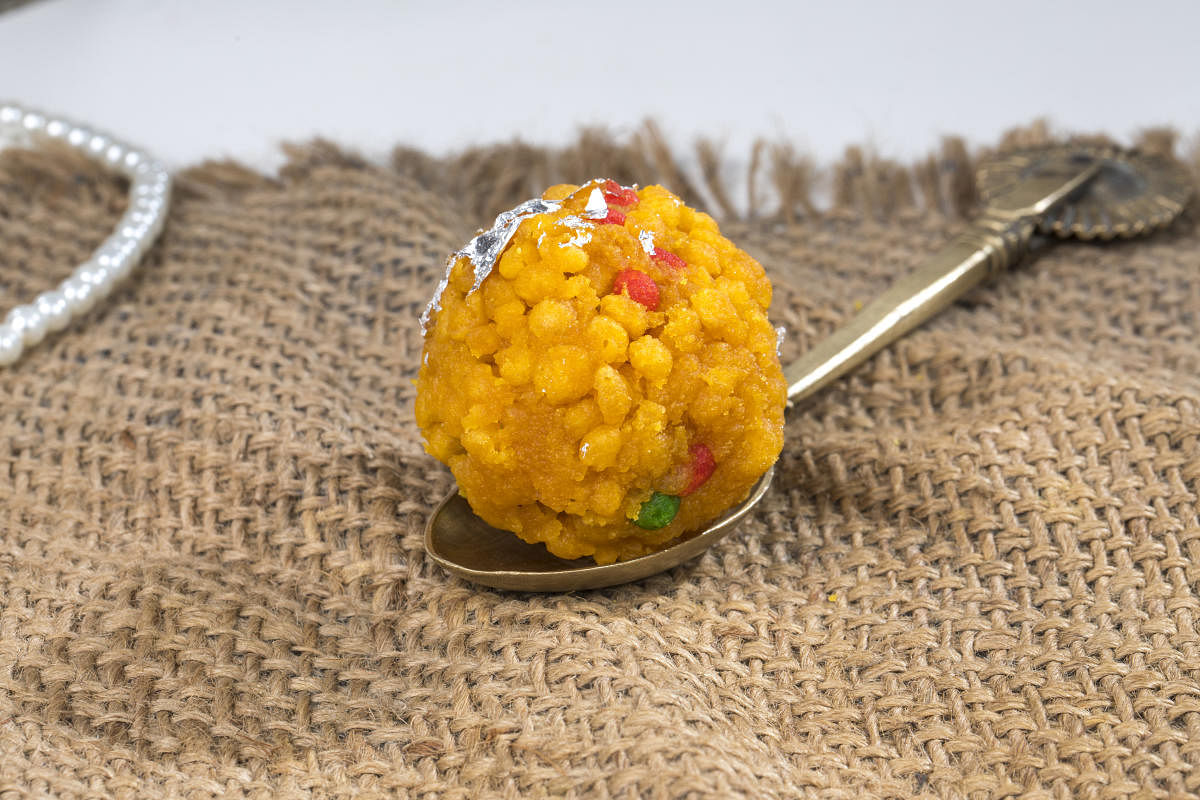
One of my fondest memories about Republic Day through my school years isn’t of flag hoisting or the march past, or even the cultural programme of which I was a significant invisible part of, but the packet of goodies that was doled out to us at the end. A white box that had one samosa, one kachori or patties, and the piece de resistance, two, perfectly shaped boondi ke laddoo. No matter which school I went to, the laddoos were a constant. Fascinatingly, I wasn’t alone in connecting boondi ka laddoo with Republic Day, every other person I know vouches for a similar emotion when it comes to Republic Day.
Clearly, whosoever chose the boondi ka laddoo and made it an essential part of the celebration did a swell job at making the sweet connect — and how. Which makes one wonder: how did boondi ka laddoo of all its peers become the chosen one? Or was there a historical event that made it stand out? The answer to the puzzle is a little more winding than the easiness of eating the laddoo. Historically, and by a personal account of historian RV Smith, the association of laddoos with this day came with the first Republic Day celebration which, while didn’t have the grandeur of the one today, was remarkable in the number of restaurants that participated in making the day grand. While the Gurudwaras served langars and Karims and others served food free to lakhs of those who came to Red Fort to witness this significant day, the sweet toothing was left to the iconic Ghantewala. The 225-year-old sweetmeat shop did so by distributing special desi ghee wale boondi ke laddoo to anyone passing their way. That laid the foundation of the long association between the laddoo and Republic Day, which schools across India followed suit.
The taste and omnipresence of boondi ka laddoo, however, is only a part of the story of why it became the edible chapter of such a significant day; the other is the history too. Food lore has it that when it came to revolutions, it wasn’t just the chapathi movement that caused much heartburn to the British rulers who couldn’t figure out the message of thousands of flatbreads passing boundaries; laddoos too caused a similar anxiety between 1900 and 1930s when the revolutionaries used these not just as their power meals but also to send encrypted messages to one another. Laddoos, especially boondi laddoos, were nicknamed bombs and often used to send coded messages, especially about the delivery of ammunition, laying out of traps, and such. When not playing coders, laddoos were also used to propagate the cause of nationalism and a free country. Be it the creation of Thaggu ke laddoo, which was created by Ram Avtar Pandey who, inspired by Mahatama Gandhi’s sermon on how sugar was harming the country, decided to rename his laddoo as it was made with British Mill processed sugar because that was cheap. Or the halwais of Varanasi who created a series of sweets including the Jawahar laddoo, a large bonbon specked with colourful bits of dried fruits and nuts, to popularise the leaders and their common dream of having a free, unified country. These sweet advocates, many of which were versions of a popular laddoo variety, worked as a double whammy for the people of The Crown, who found penalising a sweet indulgence born out of a halwai’s muse impossible to penalise. Such was the scare that when the police intercepted a telegram stating “Bengali Sweets Dispatched” for the then prominent lawyer and statesman Sri Chettur Sankaran Nair, they went into red alert just to finally realise that the “sweets” that arrived were rasgullas from Calcutta (now Kolkata) and not bombs. It was the year 1930 — when the Quit India movement was at its peak. And laddoos were code names for bombs.